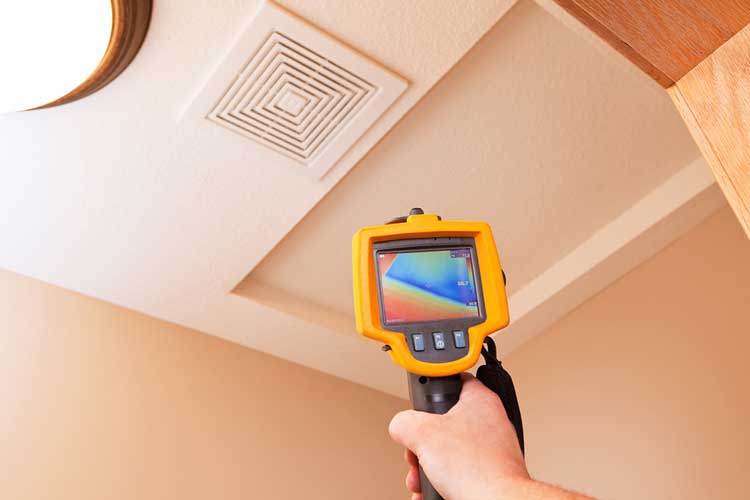Last updated November 2024

As we discuss in detail in our section on how to save energy at home, making simple repairs or improvements and changing wasteful habits will yield enormous energy savings for most families.
Before spending thousands of dollars on new windows, a furnace, or solar energy system, take basic steps toward fixing common sources of waste. For most buildings, heating costs are by far the biggest source of home-energy expense, so the best place to start is by assessing how your home passively wastes energy by looking for areas in outside walls, windows, and doors that allow conditioned indoor air to escape.
Energy auditors can help identify problem areas and suggest solutions, plus provide advice on other changes you can make to go green at home.
You can do much of the work energy auditors do. First, look for leaks. One little leak might not seem like a big deal, but having several can add up to the equivalent of leaving open a small window. It usually costs very little money to identify and fix ways your home passively wastes energy, but it yields significant savings.
Turn off your furnace on a cool, very windy day; shut all windows and doors; turn on all exhaust fans that blow air outside, such as bathroom fans or stove vents; light an incense stick and move around your house, watching where smoke blows, to identify drafts.
Most leaks occur where different building materials meet—brick and wood siding, foundation and walls, and chimney and siding. Other common problem areas are around windows and doors; mail slots; points of entry for electrical and gas lines, cable/internet wiring, and phone lines; outdoor water faucets; where vents pass through walls; cracks or gaps in siding, stucco, masonry, and all foundation materials; and around window air-conditioning units.
Use caulk to seal any cracks or gaps measuring less than ¼-inch wide, and use polyurethane foam sealant for larger ones.
To minimize leakage around doors and windows, install weatherstripping and add sweeps to the bottoms of all exterior doors.
Prevent drafts around outlets and light switches located inside exterior walls by adding insulating receptacle gaskets (less than $1 each).
If you have window AC units, remove them during the winter, or insulate them from the outside with an AC cover ($10 to $40). During summer, install units so they fit tightly within windows.
Together, these measures can save you five to 20 percent on heating and cooling costs.
Want help? Most energy auditors offer both quick assessments and full inspections. Utility companies often help pay for the quickies—typically, you pay $100 or even nothing.
A comprehensive audit typically costs $400 to $800, depending on your home and whom you hire. The inspector will examine all features of your residence and evaluate your utility spending for the last year. For a full audit, the company should use a calibrated blower door to measure the overall air leakage of your home and perform a thermographic inspection using an infrared camera. Confirm in advance that it will do these tasks; if not, find another company.
You also may as well hire an auditor who is a Certified Home Energy Rater by the nonprofit Residential Energy Services Network (RESNET). Certified auditors must complete RESNET’s training program, pass its exams, and carry a minimum of $500,000 in liability insurance.

